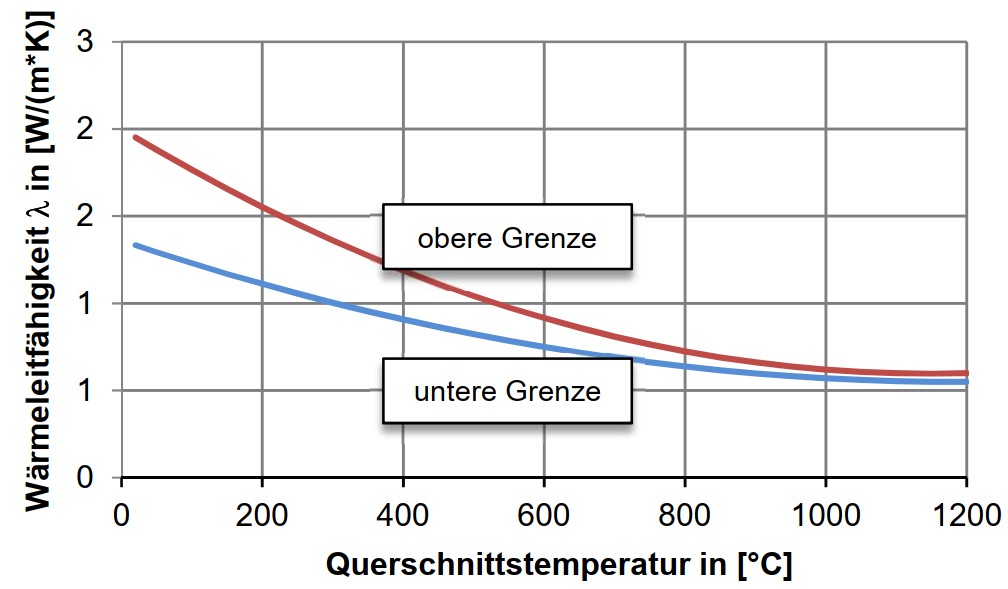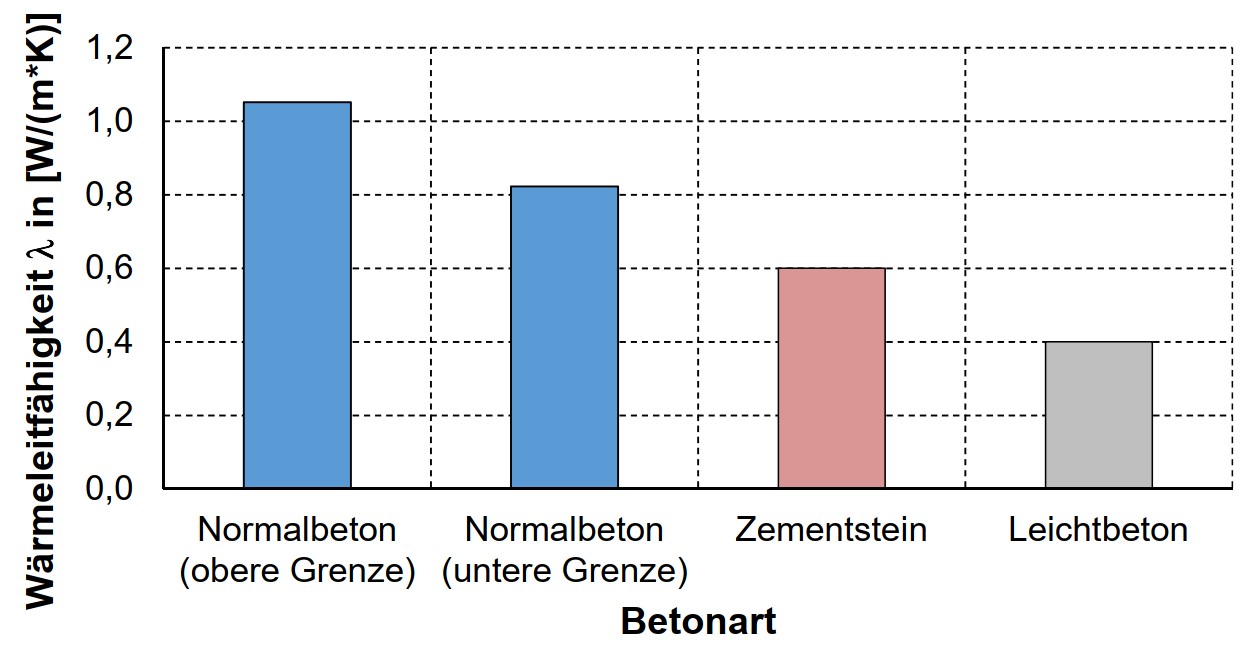Thermal conductivity of fire-exposed concrete
Is concrete a suitable building material in the event of a fire?
To put it briefly: yes! Compared to other building materials, such as construction steel, concrete has a comparatively low thermal conductivity of approx. λ=2.5 W/m⋅K . This is a great advantage in the event of a fire, because the cross-section only heats up slowly. In three articles we would like to bring you closer to the following aspects:
- Part 1: How high is the thermal conductivity of different concretes in case of fire?
- Part 2: Results of national research on the thermal conductivity of concrete.
- Part 3: Results of international research on the thermal conductivity of concrete.

Thermal conductivity of different concretes
The currently valid European standard EN 1992-1-2 regulates the design of concrete components exposed to fire. It applies to concrete up to strength class C90/105 and for lightweight concrete up to strength class LC55/60. For high-strength concrete additional rules are given in Clause 6 of this standard.
As can be seen in the figure above, the standard gives an upper and a lower value for thermal conductivity. However, the national annex for Germany stipulates that the upper value of the thermal conductivity must be used. This curve also applies to high-strength concrete.
In the figure below you can see the mean thermal conductivity values over the temperature range from 20°C to 1200°C for the upper and lower limit of thermal conductivity according to EN 1992-1-2. The thermal conductivity of cement stone and lightweight concrete was roughly determined from the available literature (see the two following articles) and compared in the diagram with the thermal conductivity of normal concrete. At this point, it is only a matter of developing a feeling for the approximate magnitude of the thermal conductivities, because of course the thermal conductivity is variable over the temperature. Despite this limitation, the figure shows that the thermal conductivity of lightweight concrete is significantly lower than that of normal concrete.
It is therefore surprising that the three different concretes (normal concrete, high-strength concrete and lightweight concrete) are standardized in terms of their thermal conductivity. Are you interested in this point? Then I recommend the second part of this series. This brings together the results of important research work on this topic.
